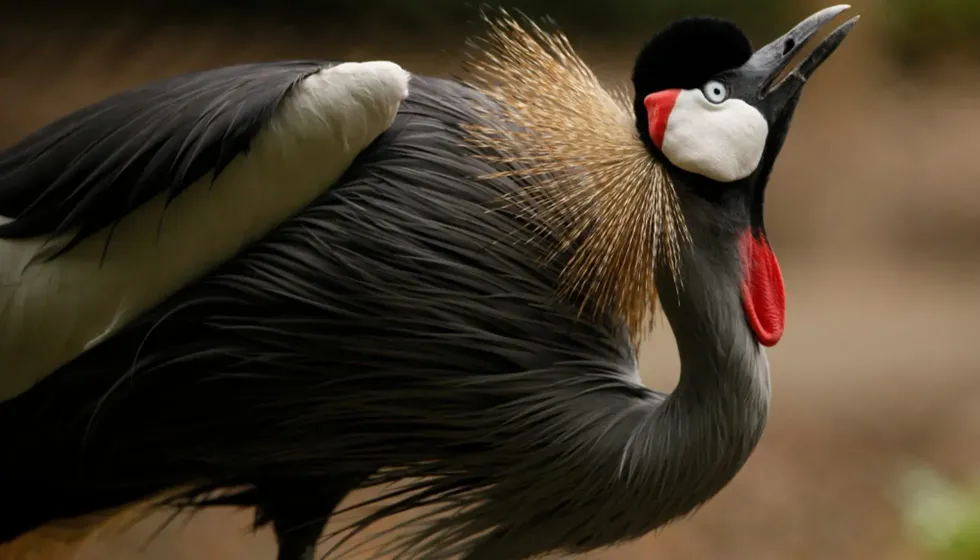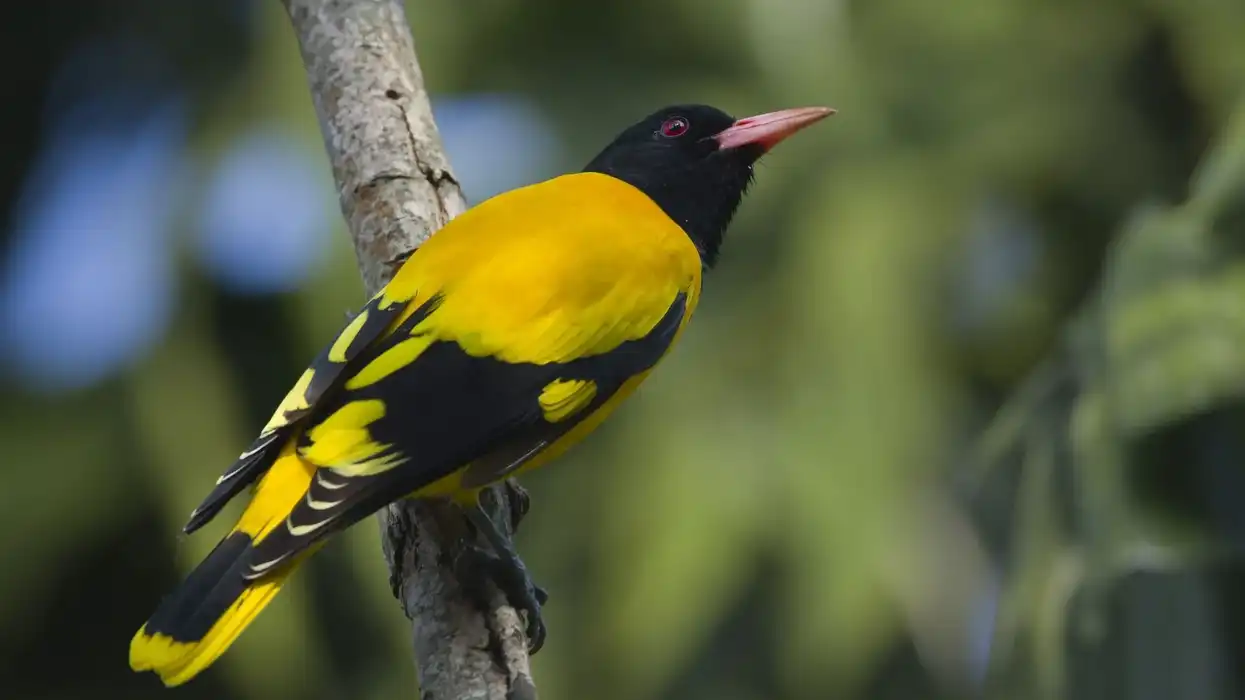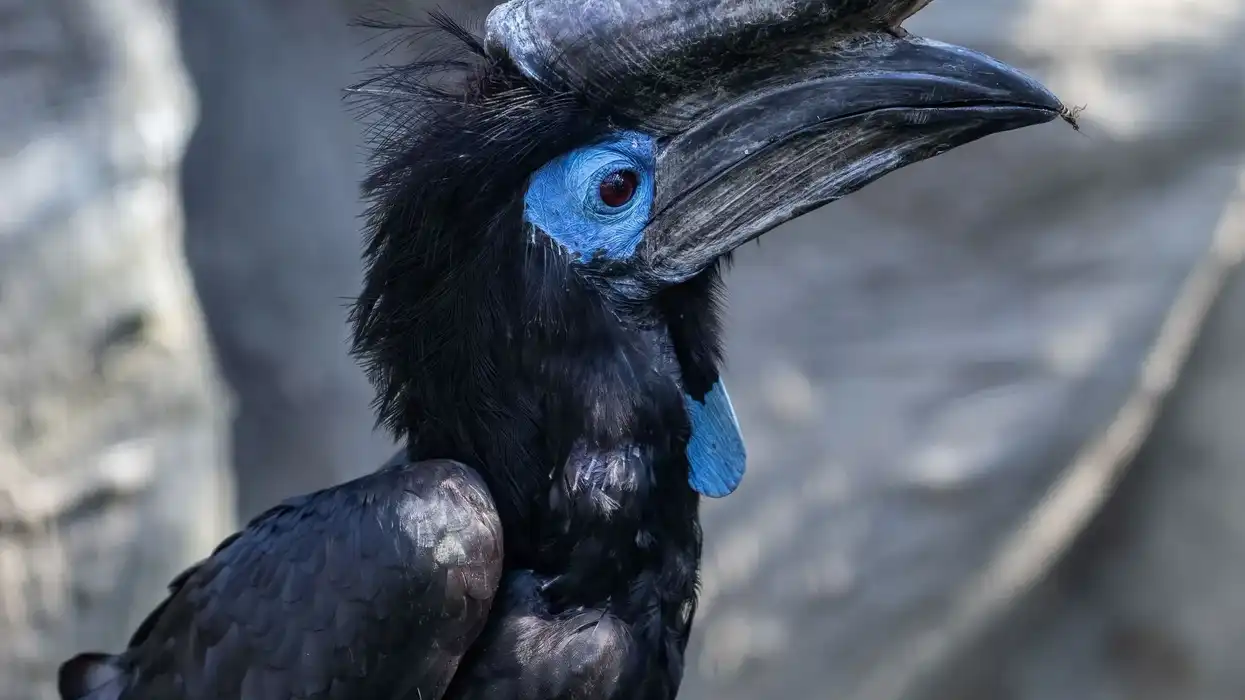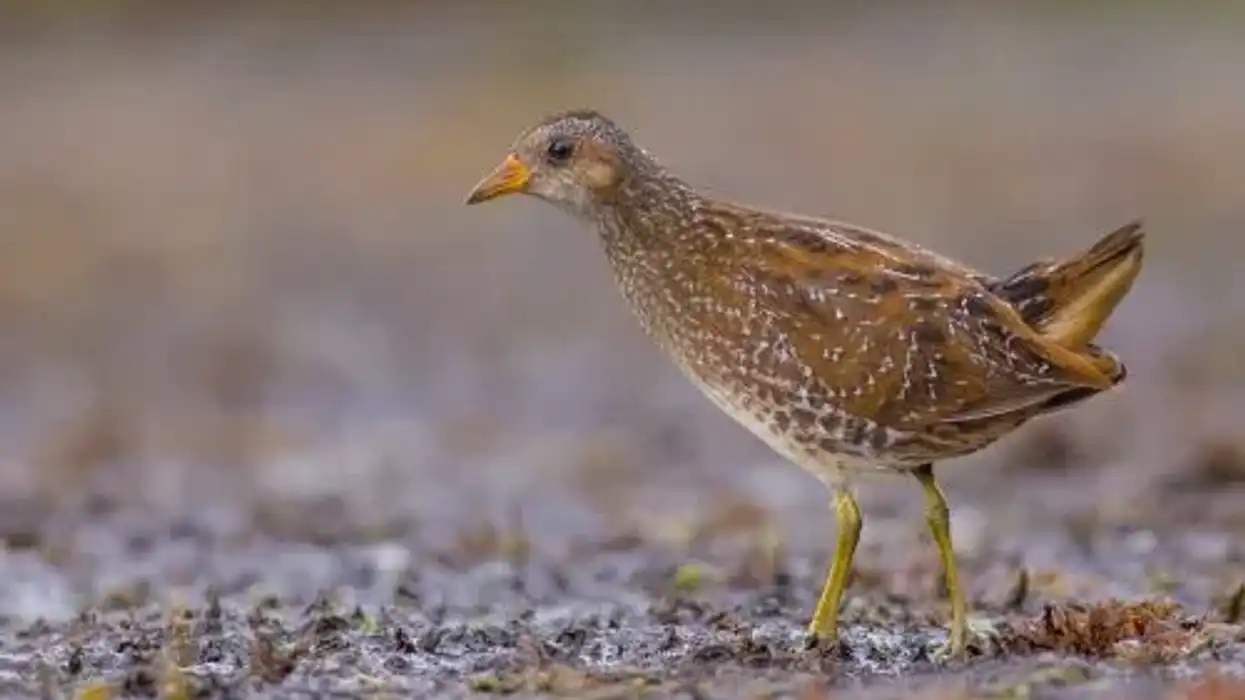Do you know what the national bird of Nigeria is? It is the black crowned crane!
Though it has the international status of being a Threatened bird, its populations have been considered of great significance in places like Kenya, Senegal, and other West African countries where it lives. It is typically found living in grasslands, avoiding any human, and loves feeding on grasshoppers and seeds alike!
However, it faces extinction due to humans and the invasion of its habitat.
These creatures are also known as the international symbol for peace in locations like Senegal and Kenya, where humans respect these cranes all across the grassland. So if you ever take a trip to these grasslands and see these brown birds in Africa, make sure you steer clear!
If you want to know about the black crowned crane and the distinction between the black crowned crane and white crowned crane, then look no further. If you love reading about interesting birds then you must also take a look at the green heron and the brant.
Black Crowned Crane Interesting Facts
What type of animal is a black crowned crane?
The black African crowned crane is a type of crane.
What class of animal does a black crowned crane belong to?
This crowned crane (Balearica pavonina) belongs to a class of birds.
How many black crowned cranes are there in the world?
The total population of black crowned cranes is about 28,000—47,000 individuals in the world. The population is declining due to habitat loss.
Where does a black crowned crane live?
The black crowned cranes live in West Africa. It has a habitat range that stretches from West Africa's Senegal Basin and Guinea-Bissau drainage to East Africa's Ethiopian highlands and South-West Rift valley.
The western portion of this range is inhabited by Balearica pavonina pavonina, while the eastern part is inhabited by the Balearica pavonina ceciliae, which is found in the largest number in Sudan. Gray crowned cranes can be observed in different wetlands or grassland habitats.
What is a black crowned crane's habitat?
The black crowned crane can be found in open habitats such as shallow wetlands, flooded wetlands, grasslands, wet croplands, marshes, and the edges of rivers and lakes in Africa's Sahel and Sudan Savanna regions. It has also been observed roosting in trees.
Who do black crowned cranes live with?
The species of wetlands tend to stay in a specific location. Large flocks of up to several hundred birds form during the summer months (non-breeding season). In the breeding season, only one pair of birds nests in each territory. These cranes hunt for food alone, in couples, or in small groups.
How long does a black crowned crane live?
The life range of this crowned crane (Balearica pavonina) is 20-25 years.
How do they reproduce?
These cranes of Africa are monogamous, and they create a bond for life long with their mate. Breeding success is reliant on the wet and dry seasons, as well as the quality of the habitats, therefore there are large margins for breeding time. Nests are made of grasses and sedges.
Clutch sizes range from one to three eggs. The eggs will be incubated for 28–31 days by parents.
As females forage, males are reported to stay guarding eggs around the nest in surrounding trees, ready to indicate any threats. The day after hatching, chicks will graze in wetlands or grassland areas with their parents. Fledglings might take anywhere from 60-100 days.
What is their conservation status?
The IUCN Red List classifies the African black crowned crane as a Vulnerable species.
Black Crowned Crane Fun Facts
What do black crowned cranes look like?
Its dark slate-gray to black plumage is distinguished by rigid golden feathers that form the crown at the top of its head. Each golden bristle-like feather is made up of a helix that is white with one side and brown on another, with a black tip.
The white feathers that are mostly on the upper half of their wings, as well as the gular sac, and a little pouch of red skin hanging beneath their chins distinguish these birds. They have black legs and toes, as well as a large hind toe that permits them to cling onto perches.
The black crowned crane wingspan length measures around 70.9-78.7 in (180-200 cm).
It has enormous red and white cheek patches directly behind its eyes that vary in size among its two subspecies: for the first subspecies, or the West African black crowned crane, the cheek patches are red on the lower half, while the second one, the Sudan black crowned crane's cheek patch is red on the upper half.

How cute are they?
These birds of the Africa region have red and white cheek patches, a beautiful crown on their head, whitish feathers on their wings, and half brown spiral making them the cutest birds.
How do they communicate?
The 'honk' and 'ka-wonk ka-wonk ka-wonk' expressions of black crested cranes are generally very low and mellow.
How big is a black crowned crane?
The average length of black crowned cranes is about 41.3 in (104.9 cm). While the length of the grey crowned crane is between 39.4-43.3 in (100-110 cm).
Thus the length of the black crane is smaller than the grey crane. The world's tallest flying bird is the Sarus crane - when standing, this crane is the height of a human.
How fast can a black crowned crane fly?
The black crowned crane is inactive, only moving between the roost among the trees and feeding regions on a seasonal and daily basis. The black crowned crane bird flies with its neck, head, and legs outstretched.
How much does a black crowned crane weigh?
The weight range of this West African bird is between 6.6-8.8 lb (3-4 kg). Although, 7-14.4lb (3.2-6.5 kg) is the weight range of Sandhill crane. Therefore, Black crowned cranes are smaller than Sandhill cranes.
What are the male and female names of the species?
There is not any special name for males and females species of black crowned cranes of West Africa.
What would you call a baby black crowned crane?
Chicks of the West African black crowned cranes don't have any distinguished name.
What do they eat?
They eat insects including locusts, grasshoppers, and flies, as well as various invertebrates including millipedes, mollusks, and crustaceans, as well as amphibians, fish, and tiny reptiles in their diet. Except during the dry season, they will primarily be found in wetlands, but will occasionally graze in low, dry grasses or in highland areas when insect populations are large.
Its major diet source is grain crops. Black crowned cranes forage in croplands and eat seeds (corn, rice, chickpea, teff, millet, lentil) of crops as their diet.
They rarely dig for food, preferring to peck at it from the surface. Instead of digging, they could stomp their feet to the ground to disturb and disclose insects. Gray crowned cranes forage for grass seeds, grasses, insects, small toads, and other invertebrates.
Cranes and herons both consume fish in the same way, however, cranes utilize their bills to dig out food inside the ground. The entire foot of the yellow crowned night heron stretches far beyond tails during flying, which may attract attention.
Are they poisonous?
These West African black crowned cranes are not poisonous to human beings.
Would they make a good pet?
It is illegal to keep these birds which are the national bird of Nigeria in captivity since their conservation status is Vulnerable. Besides this, maintaining a crane as a pet is extremely difficult; they are far too large to be kept at home.
Did you know...
The conservation status of gray cranes of Africa is endangered. Due to habitat loss, their populations are decreasing.
The fun facts about this species include that it is regarded as a peace messenger in Kenyan cultural life. Red crowned cranes are regarded as the holy crane of the East and are a symbol of good luck, fidelity in marriage, a long and happy life, and love.
Are black crowned cranes endangered?
The most serious conservation threats to black crowned cranes are habitat loss and deterioration as a result of wetlands drainage and conversions for agricultural activities, overgrazing, fire, drought, industrial and agricultural pollution, dam construction, and oil exploration. Locals' unauthorized shooting and the pet trade also pose threats to this crane.
As of 2004, the overall population of black crowned cranes was projected to be around 43,000-70,000 birds, classified by the IUCN Red List. The western sub-population was projected to be around 15,000 individuals, while the eastern sub-population was predicted to be between 28,000-55,000 individuals.
With a falling population trend, they are designated as Vulnerable. While the Siberian crane is the third highly threatened crane species in the world.
What's unique about the black crowned crane?
The black crowned crane is a Vulnerable species on the Red List of the International Union for Conservation of Nature (IUCN). It can be found over the sub-Saharan Africa region, from Guinea to Ethiopia. In addition to being Nigeria's national bird, black crowned-cranes are a culturally significant animal for many people.
Here at Kidadl, we have carefully created lots of interesting family-friendly animal facts for everyone to discover! Learn more about some other birds from our Pelican fun facts and Amazon Parrot facts pages.
You can even occupy yourself at home by coloring in one of our free printable Black Crowned Crane coloring pages.










